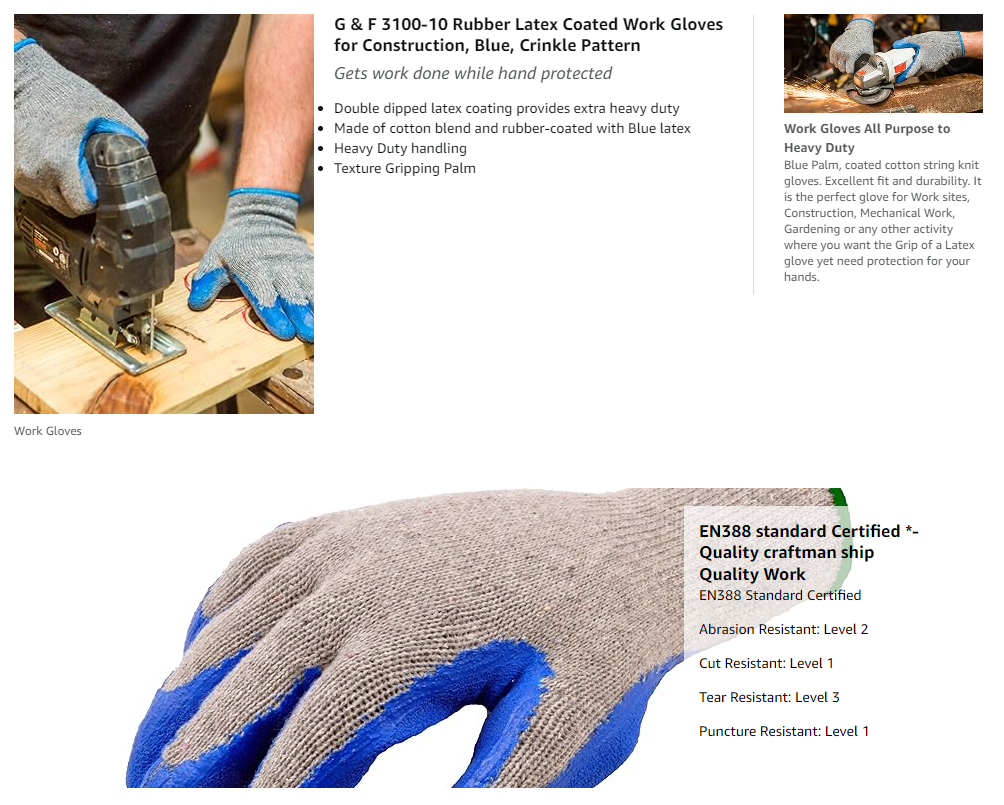Double Coated Palm - exclusive natural rubber blend texture coating technology -
We G & F Protect You
The workplace can create many hazards for your hands, whether from chemicals, cuts or burns. No single glove can provide appropriate protection for every work situation, so it is important to assess the risk for each task and select a glove that provides specialized protection.
The following is a list of gloves and their appropriate application, according to the National Safety Council:
- Cotton and fabric gloves: These can keep hands clean and protect against abrasions, but may not be strong enough to handle work with rough or sharp materials.
- Coated fabric gloves: This type of glove can provide protection against some moderate concentrated chemicals. They can be used in laboratory work provided they are strong enough to protect against the specific chemical being handled.
- Rubber, plastic or synthetic gloves: These types of glove can be used when cleaning or working with oils, solvents and other chemicals.
- Leather gloves: These should be used when welding, as the leather can resist sparks and moderate heat. The risk of cuts and abrasions also can be minimized by wearing leather gloves.
- Aluminized gloves: These gloves are recommended for welding, furnace and foundry work, as they provide reflective and insulating protection.
- Kevlar gloves: These have a wide variety of industrial applications. They are cut- and abrasion-resistant and provide protection against both heat and cold.
- Chemical/liquid-resistant gloves: Several types of gloves help protect against specific chemicals:Butyl rubber gloves: nitric acid, sulfuric acid, hydrochloric acid and peroxide
- Natural latex/rubber gloves: water solutions or acids, alkalis, salts, and ketones
- Neoprene gloves: hydraulic fluids, gasoline, alcohols and organic acids
- Nitrile rubber gloves: chlorinated solvents


